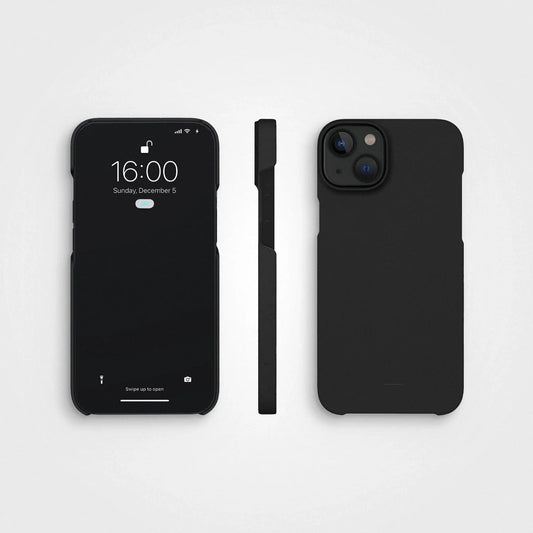Ah, the humble notebook. Faithful keeper of ideas, poems, song lyrics, observations, witticisms, quotes, doodles, lists and important information.
Whilst digital alternatives exist, there’s nothing quite like the feeling of putting pen to paper and, as we’ll discuss, there are a couple of reasons why analogue note-taking still reigns supreme.
In this article we’ll present some useful notebook tips that will help you use to make the most effective use of your notebook.
The advantages of writing by hand
Studies have shown that the physical act of writing something down improves the brain’s capacity to retain information and understand concepts. In a study conducted on college students in the US, it was found that students who took written notes were able to better explain ideas than those who typed onto laptops.
The researchers concluded that the reason for this is because it encourages less ‘mindless notetaking’, or the simple hearing and recording of information. This is backed up by another study on children who were asked to draw, trace and type a letter. It was found that drawing the letter engaged more areas of the brain, which is good for memory and brain health!
Also, diverting your attention away from screens means you’re less likely to be distracted by the normal barrage of emails and notifications and get deeper into the task at hand.
If you’re a writer or creative person, then you might have already found that sometimes a harsh computer screen becomes too much and it’s simply more pleasant for your eyes, and brain, to focus on something natural.
Lastly, another advantage of analogue note-taking is that it doesn't require electricity charged or a Wifi connection and, as is the case with ours, are suitable for use in kitchens and other environments perilous to electronic devices.
How to use your notebook effectively
You’ve just purchased your fresh notebook and are excited to get cracking, the crisp, empty pages beckoning to be filled. What you’re using your notebook for will largely determine how you structure it. Notebooks are great tools for:
- Storing information and note-taking
- Brainstorming
- Planning
- Learning
You’ll more than likely be dovetailing with digital tools, and maybe even juggling multiple notebooks for different purposes.
This brings us to the first step of using your notebook effectively.
Plan out what you’re going to use it for
You’ve invested in a new tool, it’s worth taking some time to set out clear aims for its use. Will this be your daily planner notebook? Your notebook to take to meetings? A place to keep track of your diet or fitness programme? A laboratory for creative ideas?
In fact, it’s normally best to think about this stuff before you purchase because it can influence the size and type of your notebook.
Write page numbers
Giving each page a number is great for organising your notebook effectively. Having a number system allows you to quickly find information later.
Make an index
Following on from page numbering, use space at the beginning of the notebook to write an index of page numbers that you can late give a brief description depending on what’s present on that page. For example:
- Page 14: June content brainstorm
- Page 50: Ambassador shortlist
- Page 71: New product ideas
It’s easy to see how this can benefit you in the long run if you want to quickly access information stored in your notebook.
Custom page design
If you know what you’re going to be using your notebook for on a daily basis then it might do to split out pages into different sections. Maybe one section for daily tasks and then another for general note-taking and ideas. Or, if it’s for meetings specifically, one section for agenda, one for notes, one for key takeaways and another for next steps.
Putting a page structure in place leads to improved organisation and makes it waaaay easier to decipher should you need to look back over it later.
Experiment with colours and bullets
Sometimes deciphering your own notes/hieroglyphics can be tricky! Handwriting aside, this is where a colour or key system than come in handy.
Adopting a colour system- assigning colours for different tasks, categories or topics jazzes things up a little and can helps you to read a page quicker.

Similarly, adopting a technique such as bullet journaling, in which different keys or bullets are used to represent tasks, notes or events can keep things quick and concise.
Divide into sections
If you’re using your notebook to keep track of different projects and responsibilities, or maybe if you’re using it for learning a new language it might be worth dividing your notebook out into distinct sections. Here colour coding can be used to easily differentiate between sections.
What to look for in a new notebook
As mentioned above, when deciding on the best notebook for you it’s important to consider what you’ll be using it for. For example, if you’re a copious notetaker, carry your notebook absolutely everywhere and keep it easily accessible in a coat or jacket pocket, then you’ll probably want to opt for a pocket notebook over an A5.
Another important factor is the quality of the paper. Writing on thin, scratchy paper that lets ink bleed through isn’t a pleasant experience and makes it less likely you’ll use your notebook. Look for acid-free, 80gsm from recycled sources.
Even better, we use stone paper to create our range of notebooks and journals. Advantages of stone paper is that it is silky-smooth to write on and is also waterproof, tearproof and wrinkle free. There are also a number of environmental benefits to stone paper, for example no deforestation and a super-clean production process.






























